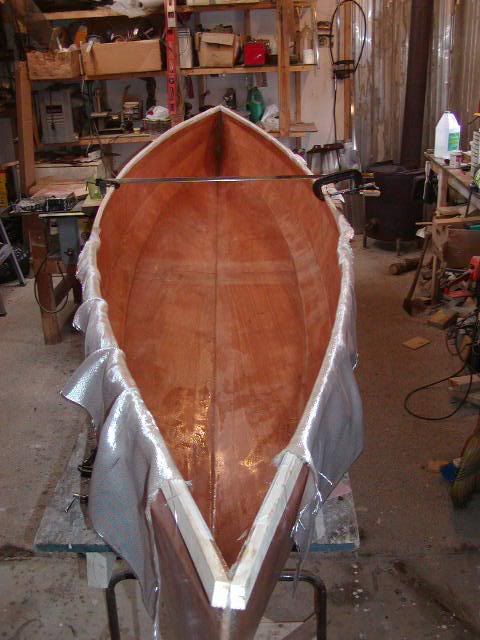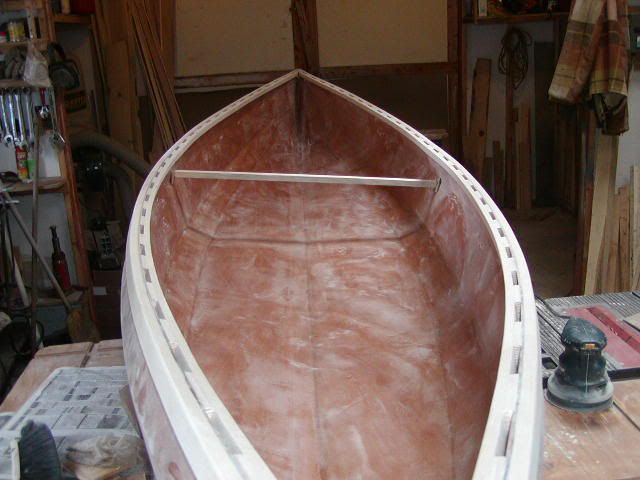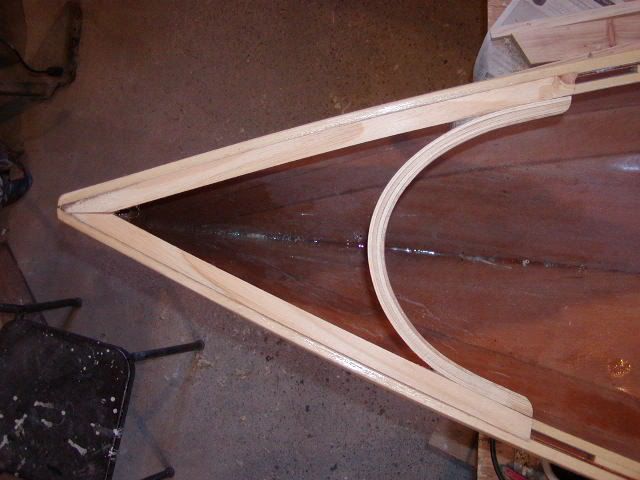Finished stern deck and buoyancy compartment.
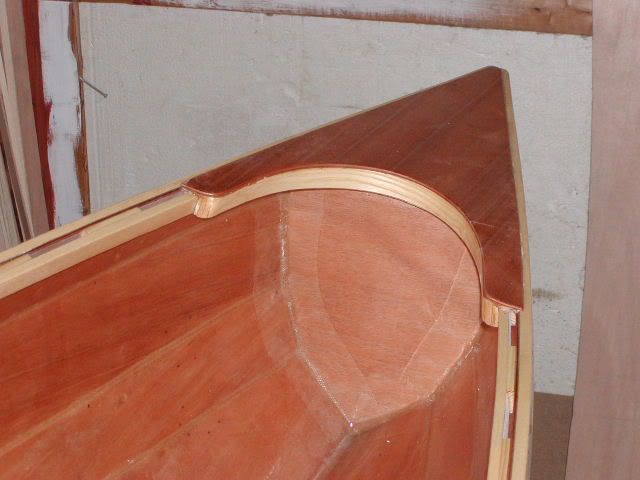
Getting there, seats next.
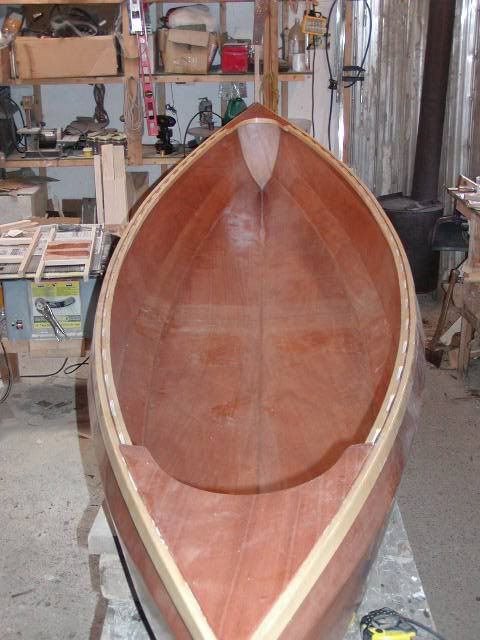
I made some seats up out of Styrofoam blocks and took the boat down to the lake at the back of the house to find out the best place for the seats, besides I needed an excuse to get her wet.
I mounted the seats 9.5" above the bottom of the boat, I wanted them as low as possible and this height is comfortable in my old canoe.
After playing around a bit the middle of the bow seat ended up 55" back from the bow and the stern seat 33" from the stern with 2 people weighting 112lbs in the bow and 135lbs in the stern. Adding a 50lb dog in the middle made little difference to trim.
We then went for a short paddle and were very pleased with the performance,

I would describe the canoe as alive and responsive but not excessively lively, the stability was good, didn't push it though, as the water is only a few degrees above zero.
I love the way this boat turns (about one boat length) compared to my old 90lb canoe that featured a full keel, this boat has enough maneuverability that I might feel brave or stupid enough to take it down some of our more rocky rivers.
She weighs in now at around 40lbs, I've been keeping track of the weight for future reference to see where weight could be saved. So far I think I could save a few pounds by doing away with the breasthook, deck and buoyancy compartment and replacing them with a simple deck (like Matt suggested) and attaching Styrofoam blocks under the seats.
The gunwale could probably have been lighter, I lucked out and got some really good strong wood and could have taken better advantage of it.
The seats and yoke weight just over a pound each so it looks like the final weight will be in the 42-44lb range.
